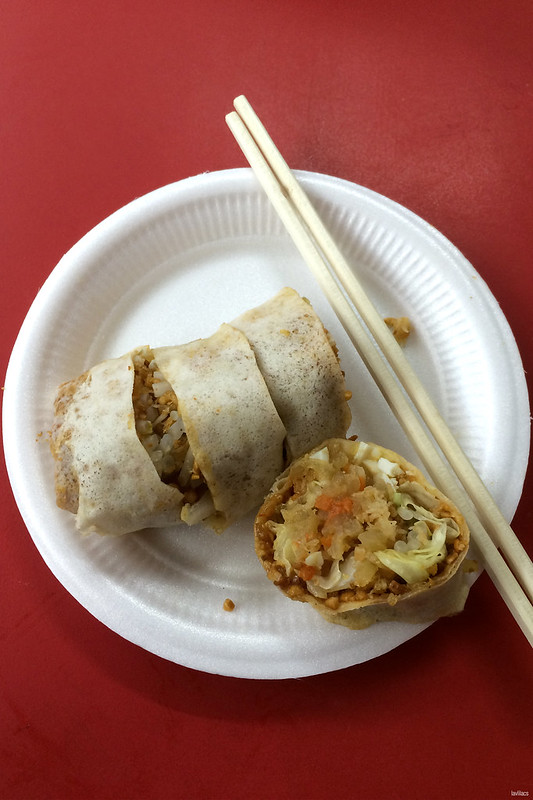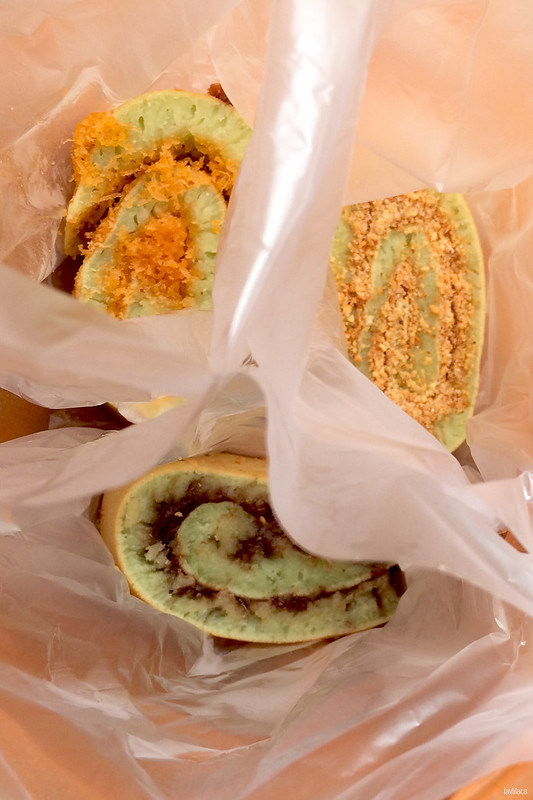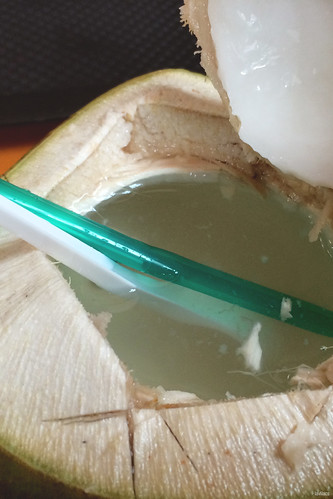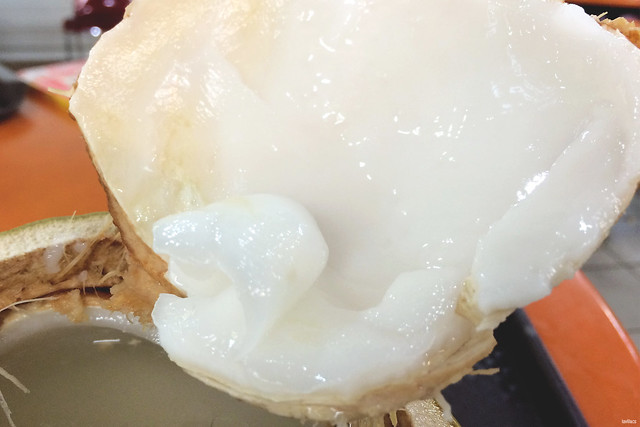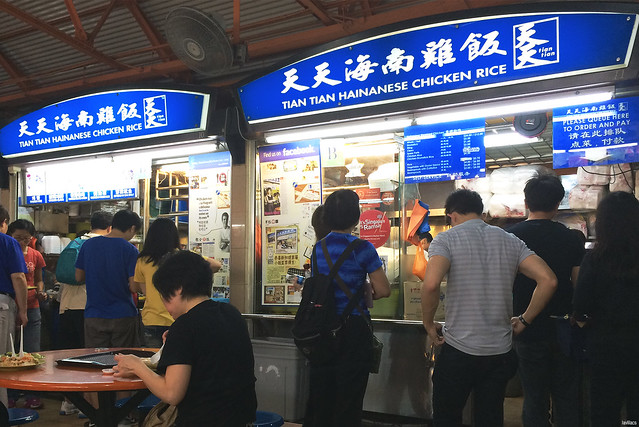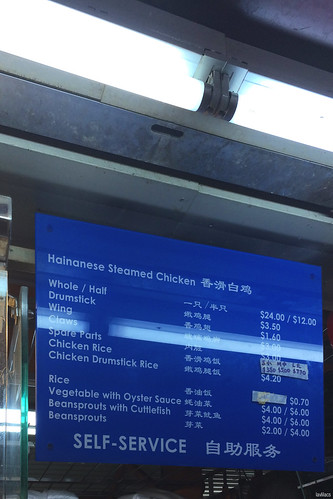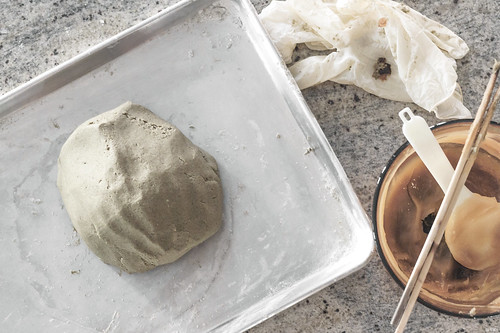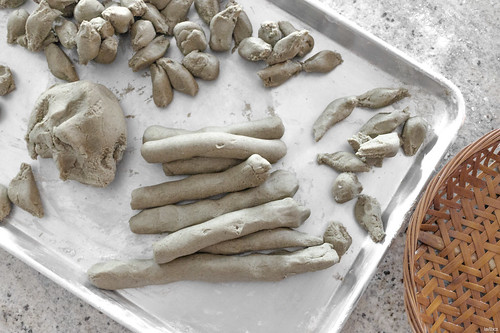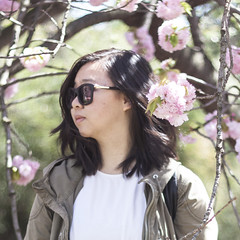Because tria Beauty guarantees 90-day results on their website, or they will offer your money back, this 3-month update should be very telling as to whether or not I am in love with, apprehensive of, or disappointed at the tria Hair Removal Laser 4X.


My wishful hopes, at this stage, were to see mindblowing results wherever I lasered with the tria system. More realistically, though, I would have just been happy to see any kind of difference. This is an at home, self-administered treatment and not a professional service.
There could be many reasons why my results aren't as drastic as others. For one, the laser beam in the 4X isn't supposed to be as strong the ones at the spas/salons. The laser's treatment window also isn't as wide (I preassume) as those owned by the pros. Since I am handling the zaps myself, it is highly possible that I made some human errors and missed spots here and there. It is really really difficult to keep track of the exact spot where I lasered and to remember to overlap it by half the circle the next zapping. The hairs on the various parts of my body could even just be the really persistent type.
So far I have personally done 7 treatments in the past 3 months. 1 treatment was done at energy level 3, another 1 at level 4, and 5 were conducted at the maximum level of 5. About half of the 7 sessions were done in conjunction with the SmoothStart Calming Gel and the rest without.
tria's website says many customers see results after 8 treatments, which equates to about 16 weeks of bi-weekly at-home laser sessions. The company mentions that "skin tone, hair color, body part, treatment level, and other factors" could affect the outcomes of hair regrowth. There could be a substantial reduction of hair to a little to even no reaction at all. Keeping all this in mind, perhaps this serves as a reminder as to why I am seeing such varying results in the different body parts I have been treating for the past few months.
I have included the BEFORE photos I first shared in this post as well to serve as an easier comparison since the company states there should be results at this point in the process.



Upper lips.
Another month of treatment has gone by and I cannot say I am excited at the results in the upper lip area. There seems to be no change in the amount or length of hairs that are growing back. If not for the new and fading acne, it would have been difficult to tell that those photos were taken weeks apart. Since I have come this far, I am willing to continue zapping the area for a couple more months. However, I am considering the possibility that the tria laser just might not work as well on finer hairs.



Armpits.
Although my pits are not 100% hair-free after 3 months of lasering, I am almost confident in saying the at home laser was worth it, to me, just by looking at the current results here. The underarms are the most promising thus far.
I am going to sound like a broken record by saying the hairs are growing finer and slower, but it really is! In-grown hairs also aren't as problematic on either armpit now. The inflammation on the crevices of my underarms in the BEFORE shot are all places where in-grown hairs were very prone to recur 14 weeks prior. Now the redness and puffiness are almost all gone. There were a few occasions where I have even seen random armpit hairs lying around my pits after a scrub down in the shower. Maybe those were the dead hair follicles tria mentions? Overall, it seems this is a success.



Knuckle hairs.
My knuckle hairs do not seem to be reacting to the laser treatments. The little strands of hair I shaved off with an eyebrow razor every two weeks seem to creep back out regularly despite the zaps. Since this area was not the main highlight of my hair removal journey, I can't say I am overly disappointed. It would have been great if there were results, but not devasting. Like with the upper lip area, I will continue to laser this part of my body for another couple months just to give the tria system a more thorough chance.
I can't say that I am completely and utterly in love with the tria Hair Removal Laser 4X, not just yet anyway. It did show some good results. But because I know that as with skincare and makeup, the device can work differently for everyone, I am not entirely apprehensive of the handheld machine either. The most I can do is give it longer chance and commit myself to doing some more treatments. Afterward, I may stop the treatment and hair shaving for some time to observe the resulting hair regrowth. This may be the best way to test how well the hair removal system worked. I have not decided how many more months I will continue to treat the hairs, but I will definitely keep record and update until then, as always.
When shopping and "extreme" activities (i.e. cable cars, Ferris wheels, Segways) aren't of interest, flora and fauna become the day's highlights while traveling with my Aunt. Singapore has a surprising amount of large zoos and aquariums for its country size: Singapore Zoo, River Safari, Night Safari, Jurong Bird Park, and S.E.A Aquarium to name a few well-known ones.
Scientist and species-enthusiast I am not. Exhibits and animals can all start to look similar after going to many zoos or aquariums. What makes some more interesting to visit is the way the wildlife roams. It was nice to be able to see how open most "enclosures" were at the Singapore Zoo. While the level of freedom can't compare to the animals' natural habitats, it seemed more freeing than other animal parks. The Night Safari has an intriguing concept, night time zoo dedicated to nocturnal creatures. It was a little anti-climatic visit, for me. My human eyes couldn't adjust and see everything properly. Riding on a relatively quick tram ride didn't help either, but I rather ride that than try to journey through the safari on foot in the dark. Heh. Maybe if I was less afraid of the dark? Or if a had a braver companion?
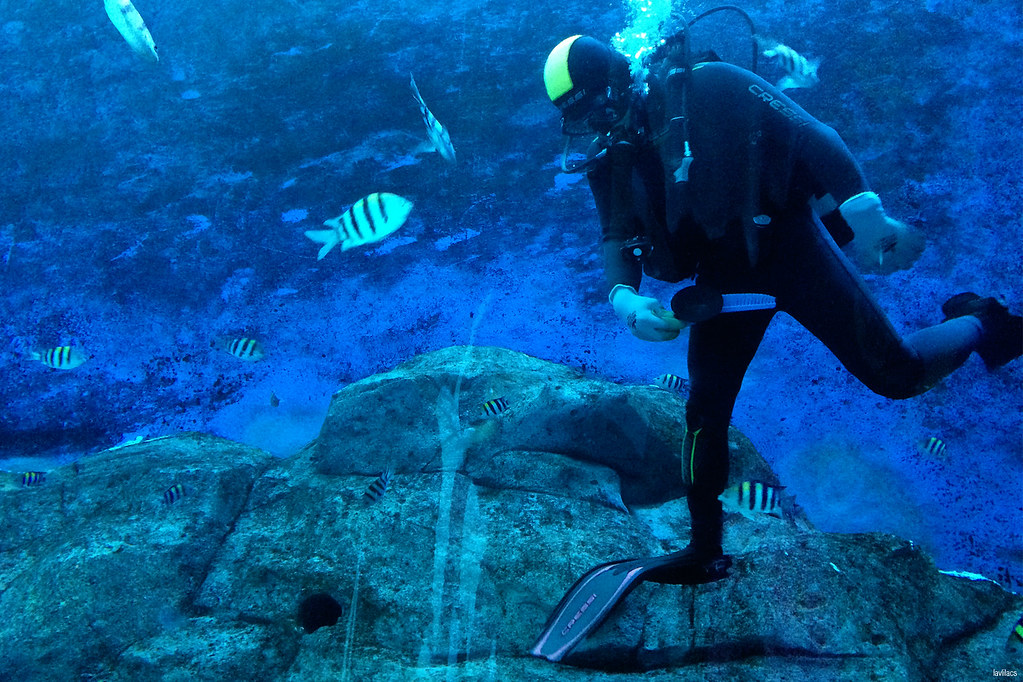
Scuba diver at S.E.A. Aquarium
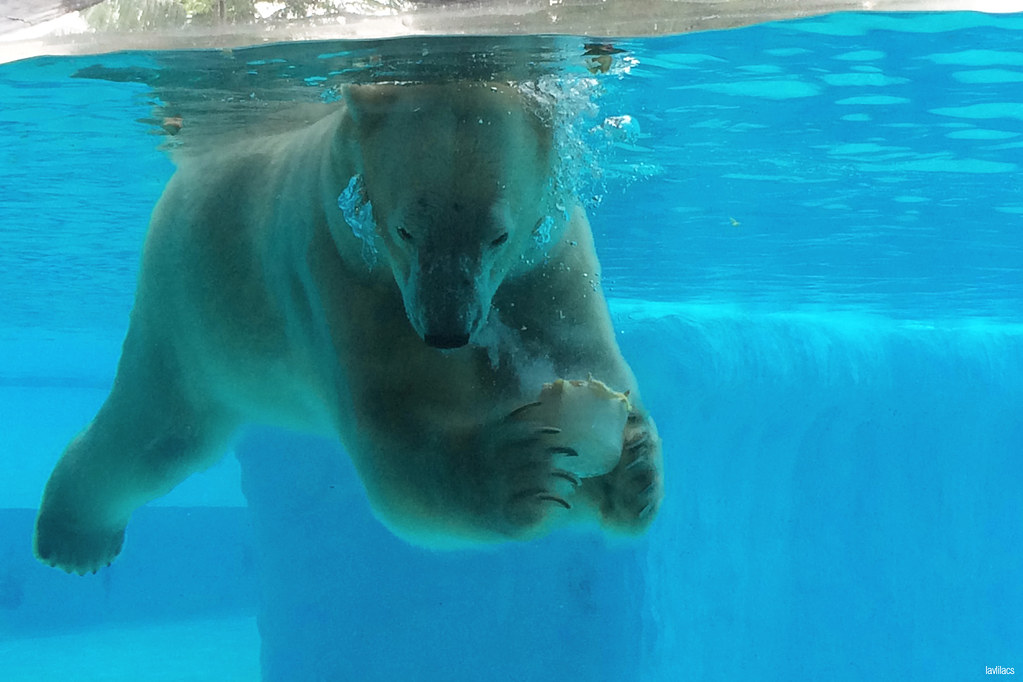
Inuka the polar bear at Singapore Zoo's Frozen Tundra zone
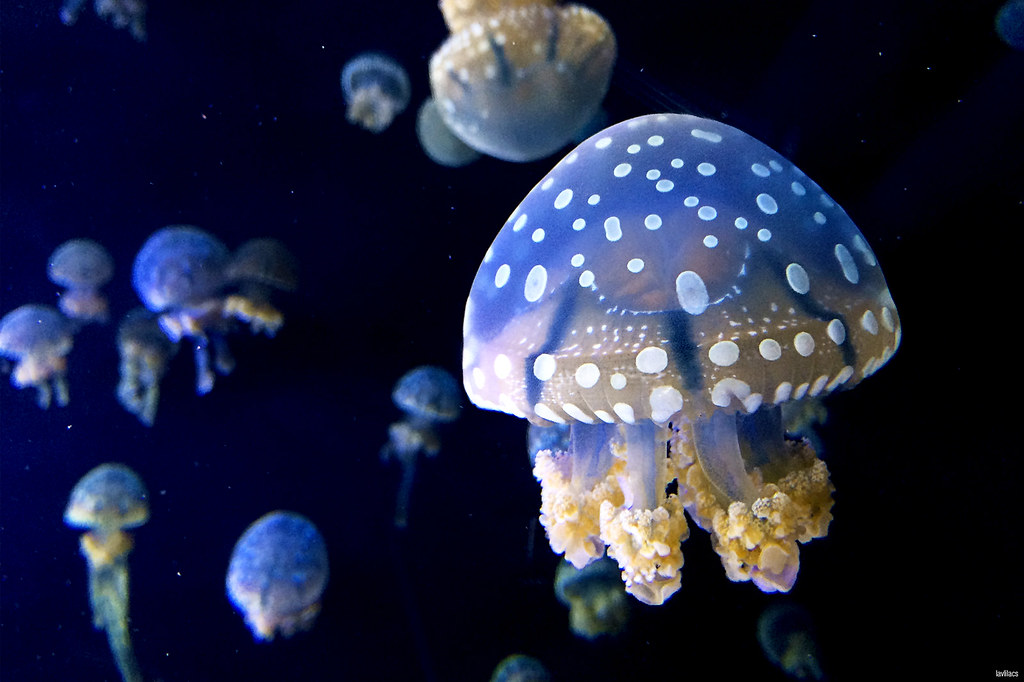
Jellyfish at S.E.A. Aquarium
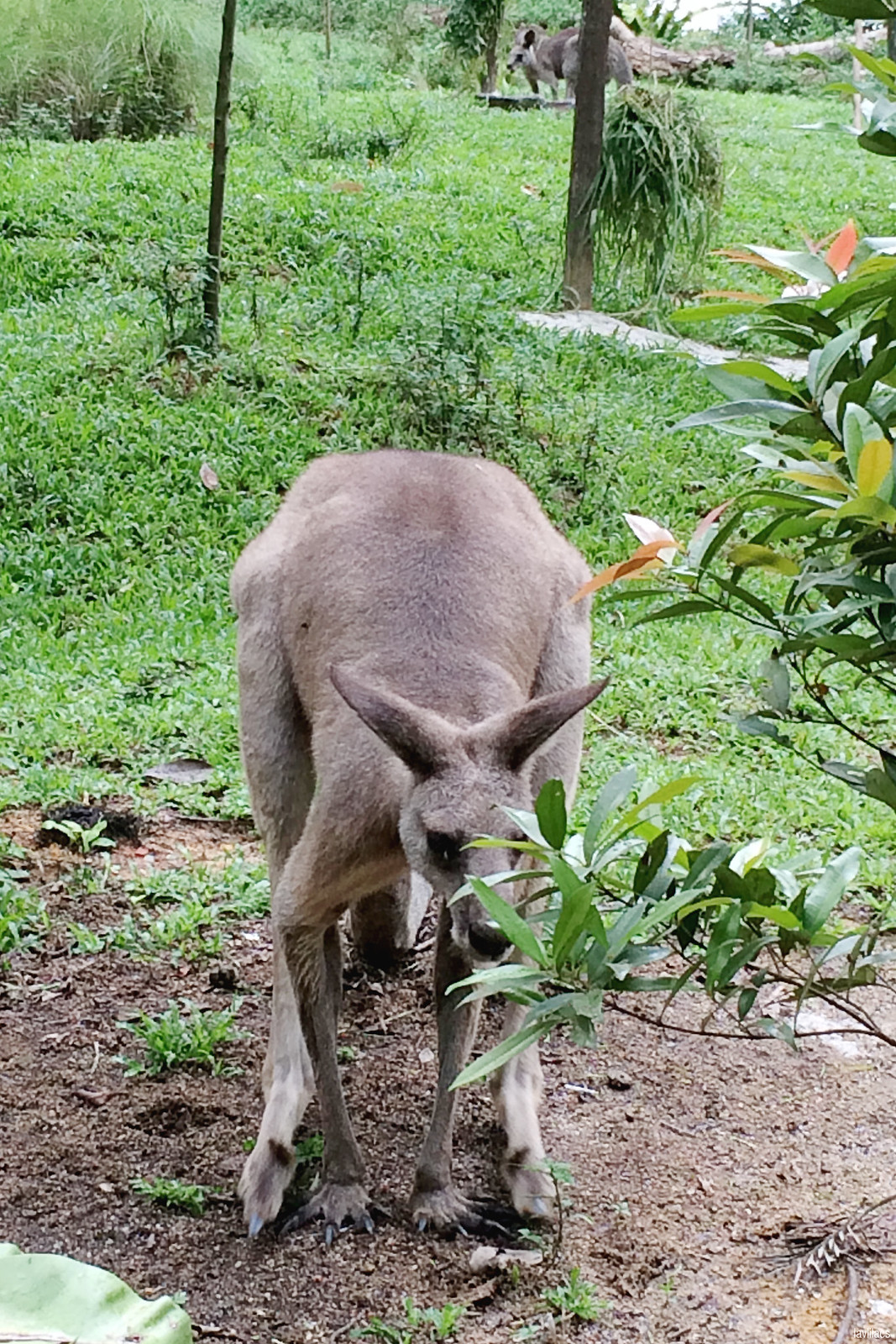
Kangaroo at Singapore Zoo's Australasia zone (formerly Australia zone)

Giraffe feeding at Singapore Zoo's Wild Africa zone
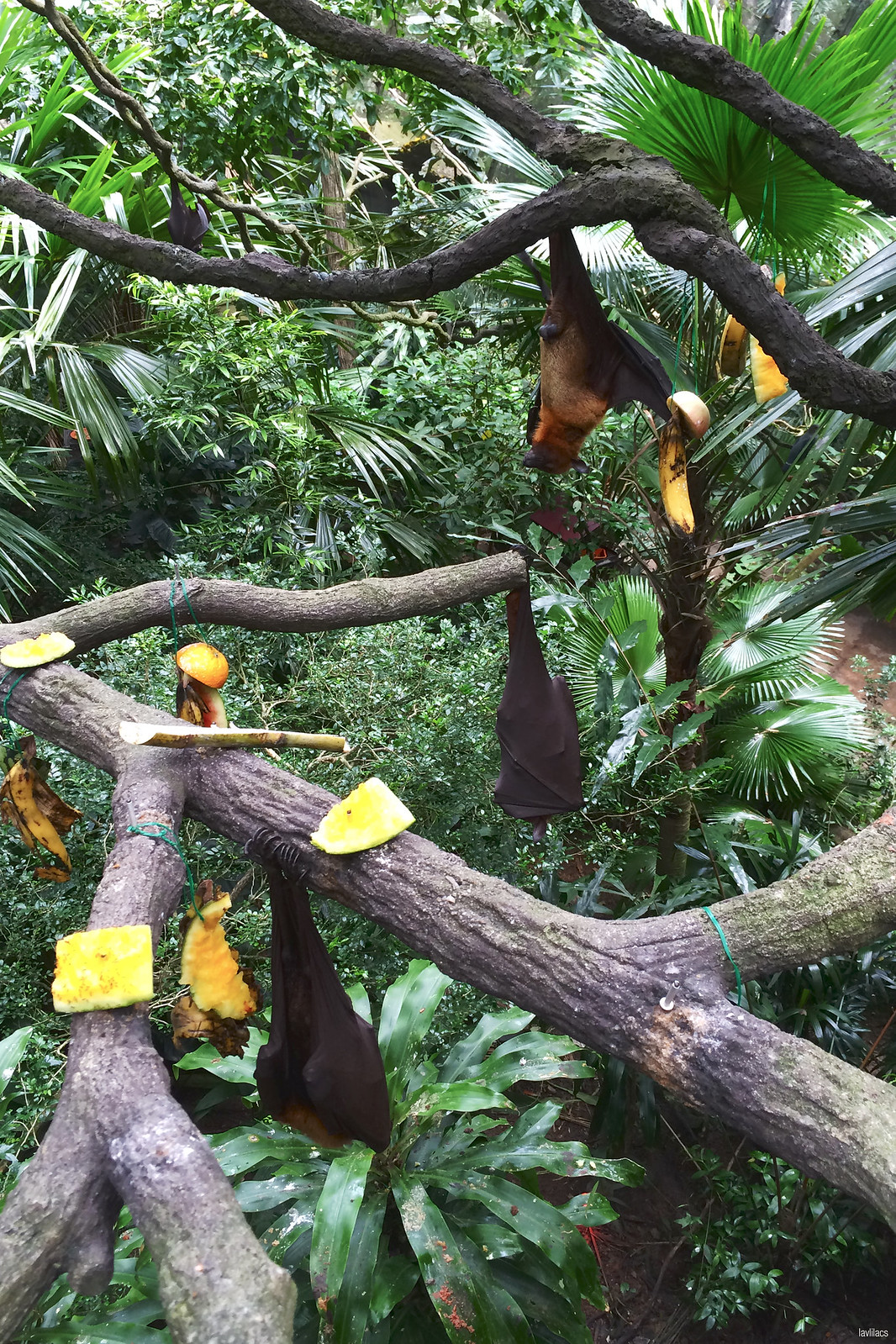
Malayan Flying Fox at Singapore Zoo's Fragile Forest zone
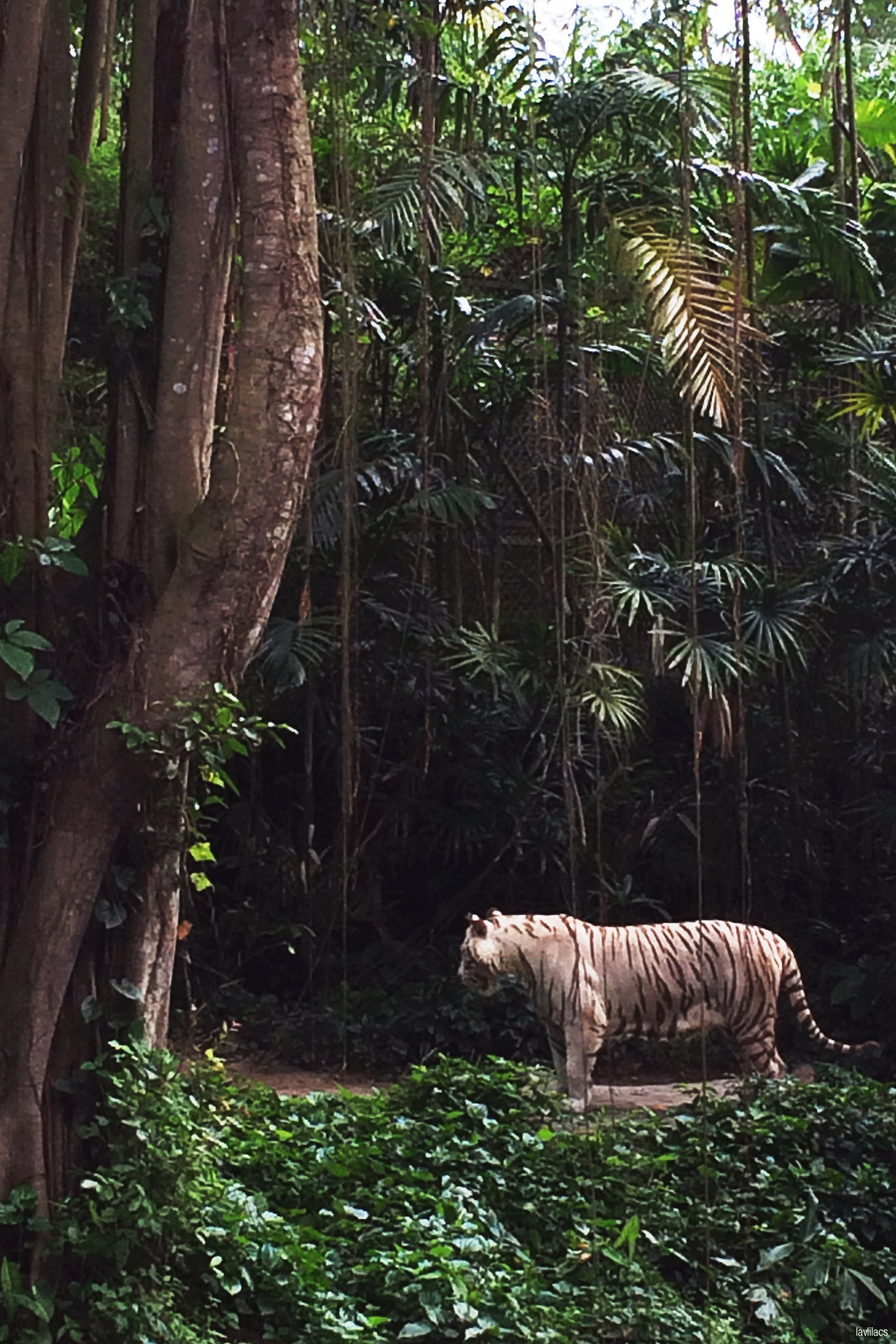
White tiger at Singapore Zoo

Creature of the Night show at the Night Safari
New York may be one of the most culturally diverse cities, but there are still many cultures and countries that aren't as well represented as others in the food scene. Chinese and Japanese cuisines were the forerunners in the Asian restaurant category. Korean food has grown steadily as all things Korean become ever more popular. Thai, Vietnamese, Malaysian, and Filipino eateries are specialties that exist and are slowly gaining a larger foothold even on non-Asian foodies' "To Try" lists.
Singapore is a country that is very under-represented in New York City's food world. It could be that the Singaporean food culture and hawker centers don't translate as well here or maybe foods that are similar to Singaporean cuisine could also be found in existing establishments since the country itself is a melting pot of many Asian immigrants.
It is safe to say that my most memorable moments of Singapore are all food related. Being able to taste various local eats was just as exciting as exploring new sights. Everything was new in one way or another. Not every single thing I ate there was out-of-this-worldly delicious. Certain foods suited my taste buds more than others. The trip to Singapore wasn't solely about eating the best of any one kind of food, rather it was just to try new types of food that I haven't had before.
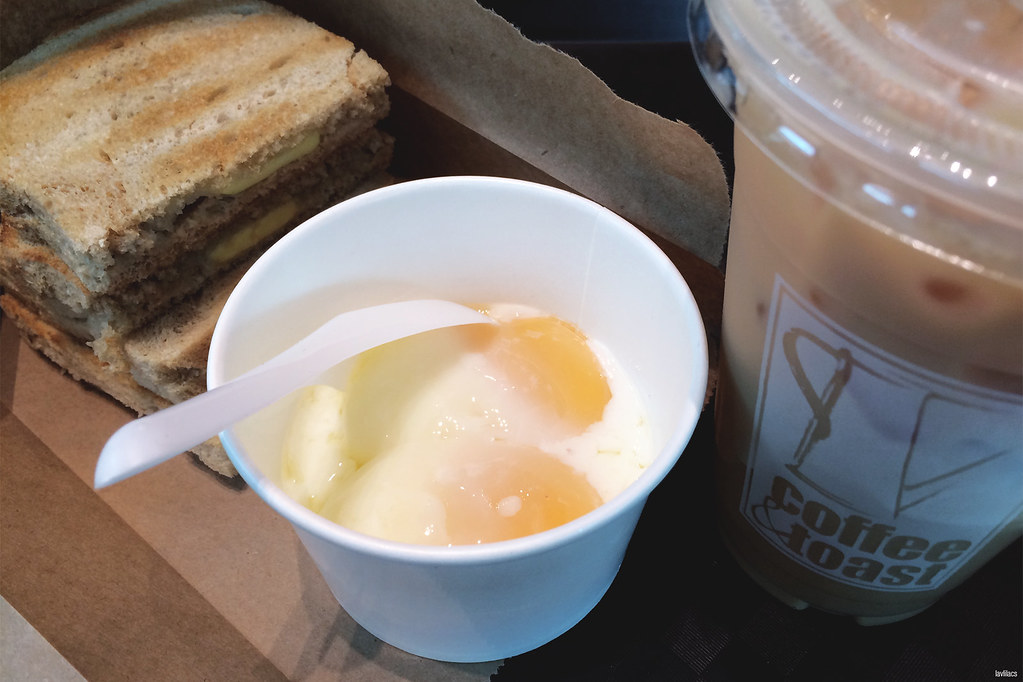
Coffee & Toast, Singapore Changi Airport.
Kaya toast (toast with coconut jam and butter) with onsen egg and teh peng (iced tea with condensed milk and sugar) are supposedly the representative breakfast and snack combo in Singapore. I almost left the country without having tried it once. Kopitiam stops (coffee shop) were never needed as neither my Aunt nor I drink coffee; plus, we favored another thirst quencher during our visit.
Had I known how delicious yet simple and affordable this food pairing would be, I would have made sure to have it at least once or twice more as an energy booster. Although kaya is a jam, it isn't nearly as sweet as the typical berry varieties are. The addition of the runny eggs and butter help to balance out the sweetness of the jam and the dryness of the toasted bread.
My trip to Asia also affected my preferences in milk tea. Hong Kong and Singapore's choice of pairing condensed milk or evaporated milk with black tea brings a whole new world of differences that regular milk and even half & half cannot compare to. While the latter two can water down the flavors of the tea, the former two (I feel) add a creaminess while enhancing the tea. If that makes any sense at all. To simply put it, condensed milk + tea yields a stronger tea taste and milk + tea yields a weaker tea taste.
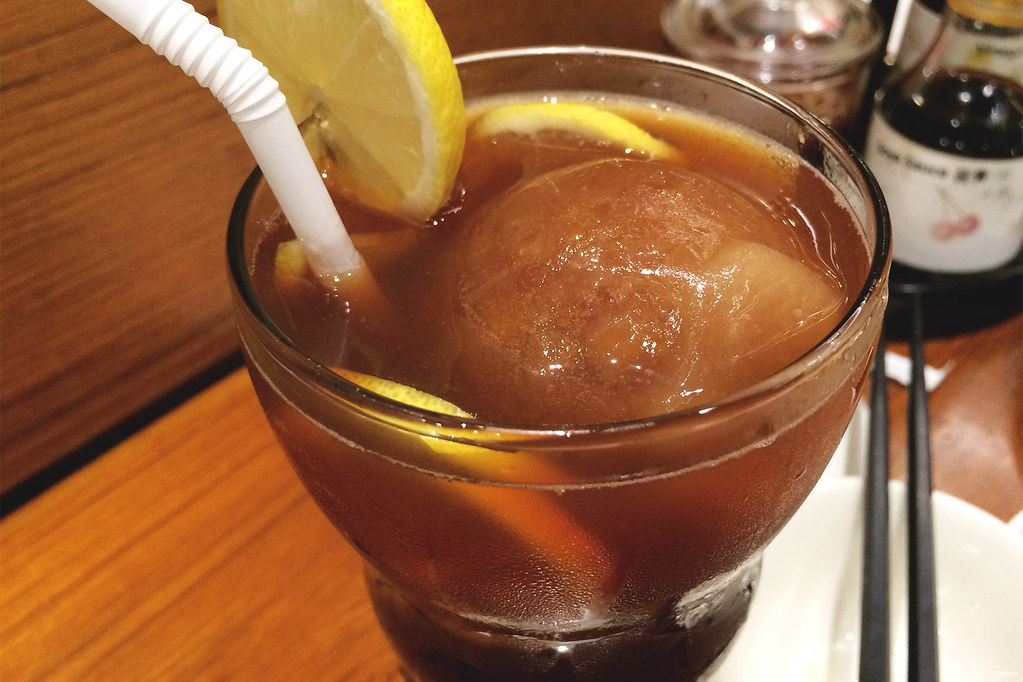
Din Tai Fung, Marina Bay Sands, Marina Bay.
The best drink I had in Singapore was an unassuming cup of lemon earl gray iced tea from Din Tai Fung. Yes, my favorite item from Din Tai Fung Singapore was a glass of tea and not the soup dumplings. Not that the food I had was bad or anything like that. The tea just blew my mind.
Maybe it is was the use of frozen earl gray tea in place of typical water-based ice cubes? Perhaps the tea Din Tai Fung sourced is of very high-quality? Or is it possible that they use a very concentrated earl gray tea base? Whatever the reason, this was the single best cup of cold lemon tea I have ever had! The closest comparison I can think of would be to say it was like the natural and less-sweet version of a can of Brisk or Nestea. The tea flavor was so concentrated yet not cloyingly sugary. The ball of frozen tea became slush-like as it melted throughout the meal.
Ah~ I still can't stop thinking about it! I wonder if this ice tea is available in Din Tai Fung's in other countries too or if it is a region specific item.
Ann Chin, Chinatown Complex Market, Chinatown. & Weng Pan Cake, Maxwell Food Center, Chinatown.
Popiah and pan cake both look so familiar yet very different from anything I have ever eaten before. Popiah looks similar to a burrito but is much smaller in size. It is a bit big and not fried to call it a spring roll. The wrapper skin is very thin and filled to the brim with lettuce, carrots, sprouts, and some crunchy bits. This was definitely one of the few things I tried in Singapore that wasn't my cup of tea. For something that looks like it would be savory tasted surprisingly sweet.
Min chiang kueh (Hokkien for peanut pancake) is something my Airbnb host recommended in her nearby eateries guide. Even though at first glance it doesn't seem very special, these swirly treats are very unique. The pancake has a chewiness and airiness to it that the typical flapjacks lack. Desiccated coconut, sugar-peanut mixture, and red bean fillings are tried & true matches to anything remotely "cakey". I think my favorite may have been the peanut version because the crunchy texture paired well with the soft sweet roll. These min chiang kueh sell for 50 cents a piece. It is worth a try without having to commit to a lot at once.
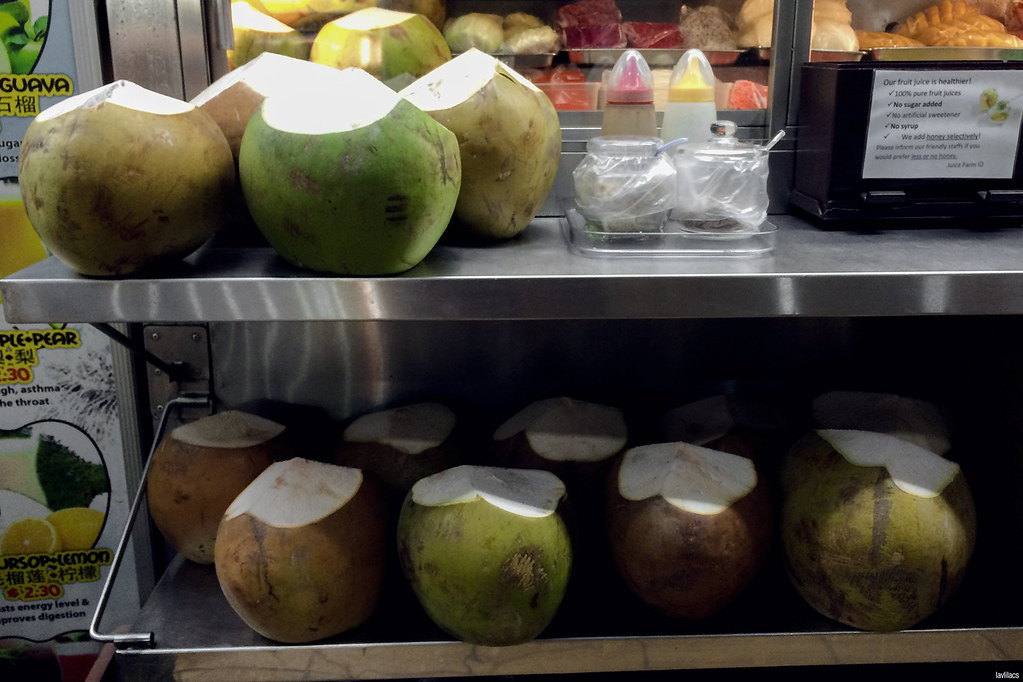
Maxwell Juice Bar, Maxwell Food Center, Chinatown.
Sipping fresh coconut water in the humid Singapore weather is second-to-none. It is almost impossible to miss it. Hawker centres are everywhere in the Singapore and most will have at least one vendor who sells fresh coconuts. It couldn't be any more practical since the vendors could easily crack open the coconut for you and the hawker centres have places where you can properly discard the remaining shells.
While drinking coconut water straight from the fruit is as good as it can get, I had no idea young coconut flesh could be so interesting. The meat is jelly-like and scrapes off easily. It made for a great bonus dessert.
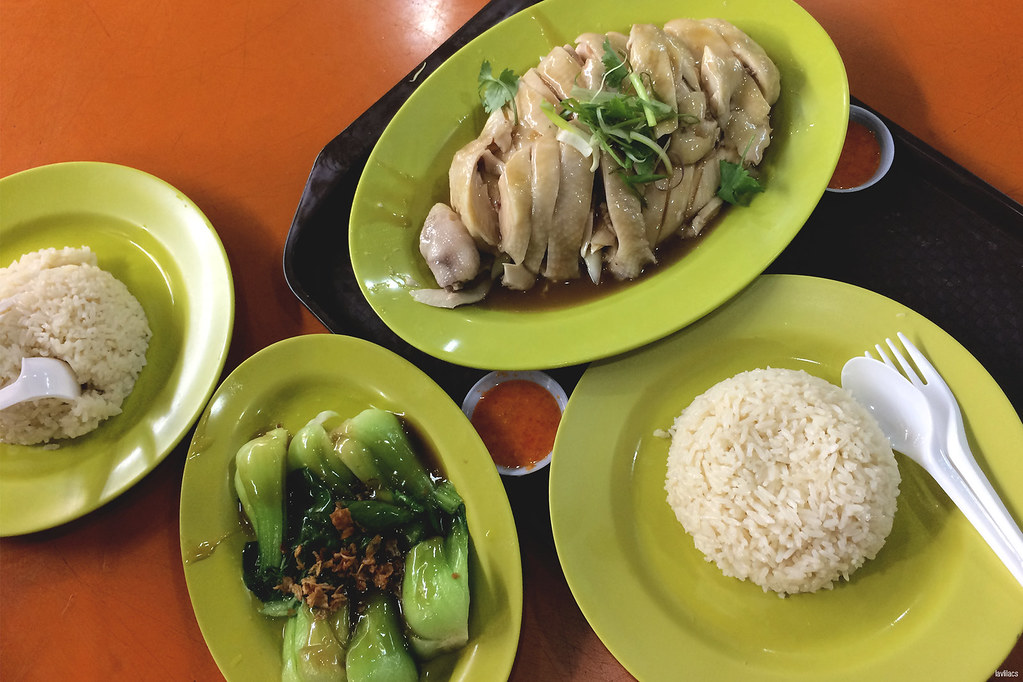
Tian Tian Chicken, Maxwell Food Center, Chinatown.
Tian Tian Chicken Rice at Maxwell Food Center is certainly on the top of my "Most Memorable" list. Hainanese chicken isn't a new dish to me. Yet the way the way Tian Tian Chicken Rice made it felt completely new. The meat was so smooth and tender. The breast meat wasn't dry or tough at all! The flavored rice was tasty and not overly fatty.
When any restaurant or food vendor has long lines of not only tourists but also locals waiting for food, it is safe to say that it would be a solid choice for a meal. Tian Tian definitely didn't disappoint. Chicken and rice are what they do (no really, they only do chicken, rice, and veggies) and they do both oh so well. My aunt and I enjoyed it so much that this was the only place we ate at twice during our short visit to Singapore. I am over the moon excited to hear that Anthony Bourdain is working to bring them over to NYC in the near future for his Asian style food center in Manhattan.
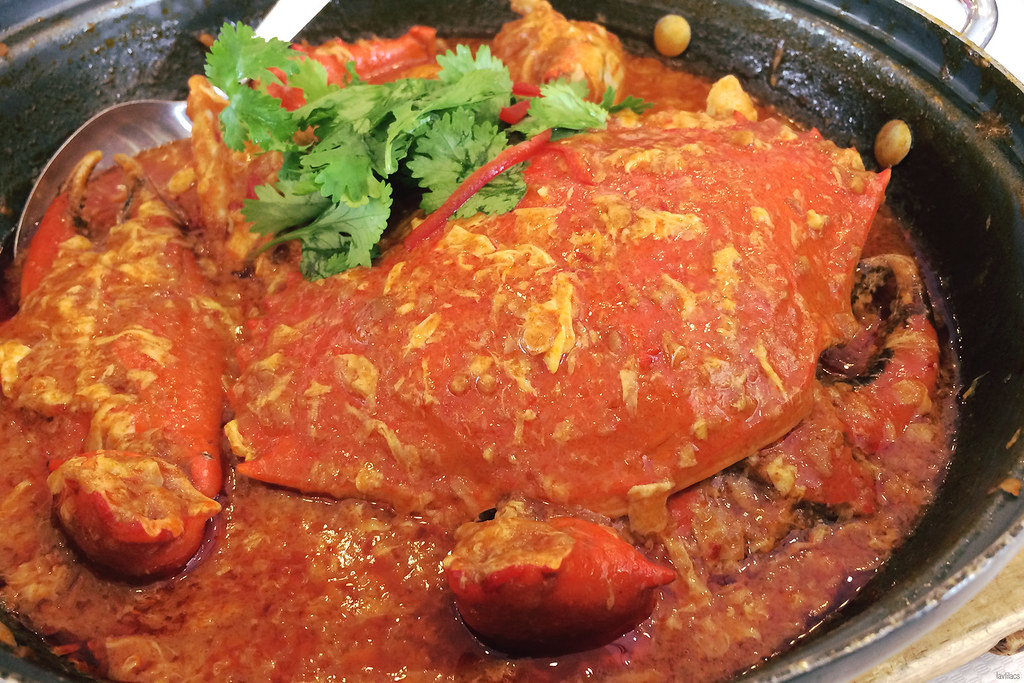
Singapore Seafood Republic, Sentosa.
I am usually the last one to reach for crustaceans if it is ordered at big family dinners. So much work is needed to pick out such a small amount of meat. Some time ago I heard about Singapore's unique chili crab dish and how beloved it was by everyone who's tried it. Such praises kept it on my food radar despite my laziness for deshelling seafood.
It was unexpectedly quite difficult to find an eatery that served the dish that also wasn't too out of the way. I wanted to stop by Sentosa even more after I found that a place called the Singapore Seafood Republic served chili crab. This is definitely a very heavy dish for two people in the middle of the day, but once-in-a-lifetime chance, right?
The sauce of the dish is definitely the star: spicy but still sweet and tangy. There isn't enough crab meat for all the saucy goodness. My biggest regret is not knowing to order fried buns to use as a sauce mopping mechanism.
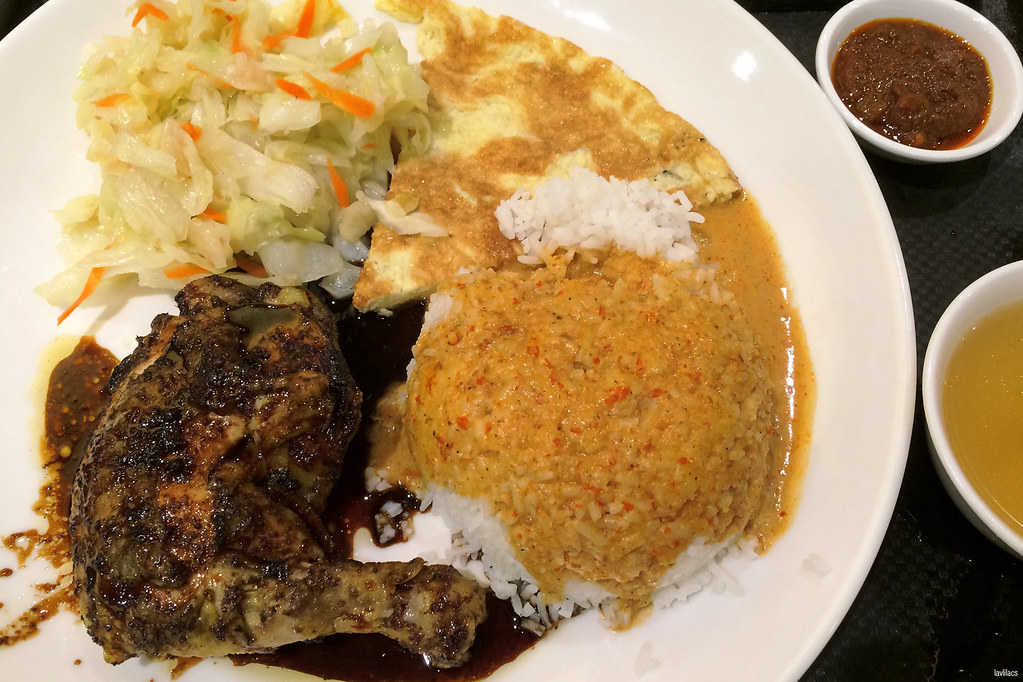
Riverside Indonesian BBQ, ION Orchard, Orchard Road.
With all the food courts and hawker centres available in Singapore, the choices for lunch and dinner are endless. A little too overwhelming especially for someone as indecisive as me. While the above foods were recommended in some way or another to me via a guide or internet review, Riverside Indonesian BBQ was something I stumbled upon completely by chance. My Aunt and I chose a random shopping mall on Orchard Road to have dinner and we chose different food vendors to buy our meals from. Without searching anything up, I chose to have some grilled chicken based on line size and scent alone.
The ayam panggang set (grilled chicken with curry rice, veggies, and fried egg) from Riverside was unlike anything else I've ever had. Probably because I have never had Indonesian food before. But still, the grilled chicken and their sauces were amazing! Saucy rice is my biggest weakness. There isn't anything else like slathering a layer or flavor over a plain bed of rice. I remember the meat being very tender and juicy. Yet the highlight of the dish, in my opinion, is whatever the dark caramelized sauce is which the chicken bathes in. Oh~ what I would do to be able to eat this combo again!
My feelings towards the tria Hair Removal Laser system at the 2-month mark is, with a doubt, mixed. Had I not kept a photo record for comparison, I may have even been a tad disappointed. The lasering seems to be working well in one area but not as nicely in the others. I can't say for sure if it is due to do the type of hair or the particular area I am trying to target. Then again, there is still a month left in the promised 3-months results period. So who's to say the progress won't be exponentially better in a few weeks time?



3 zapping sessions per month seem to be the treatment norm with the biweekly laser recommendation. Unlike the first month though, I survived all 3 sessions this time at level 5 power and without the SmoothStart Calming Gel.
I mentioned how I didn't feel like the gel was very effective at numbing the pain in the last update. After going through the treatments without the gel last month, I still think the gel is not 100% necessary. The sensational difference between the laser zaps with and without the gel is negligible. The gel, if nothing else, provides a placebo effect to help calm my own nerves. There was some pain with it and without it.
It will hurt when the laser hits a hair follicle. The main variable is the degree of pain. When the laser doesn't reach any hair follicle, there is no pain. Just warmth. (I think) when the laser hits a finer type of hair, the pain is, as many others' have described already, akin to when a rubber band strike against the skin. When that beam of light hits thicker hair, however, a better-suited comparison would be as if something extremely hot briefly grazes your skin at a very specific location. The sting lasts a tad longer and reaches deeper.



Upper lips.
This is one of the areas where I am unsure if the tria Hair Removal Laser has been very effective so far. While I thought I saw slower regrowth in the shaved areas in my last update, the recent photos don't show any major differences. The bald spots still are hairless. The sparse hair spots still show little hair strands.



Armpits.
If it weren't for the armpit photos, I would have been surely disappointed. The results in my underarm region are the most reassuring towards continuing the laser treatment journey. The regrowth of the hairs is much slower and the new hairs also look thinner than before.



Knuckle hairs.
The other area where I am unsure if the tria laser is of any use. It is difficult to see in the photos. But the few hairs that I shaved and zapped are definitely growing back. Whether it is coming back at a slower rate or thinner shape, I am not completely sure.
Oh, Mister Sun. Sun. Mister Golden Sun. Please shine down on me. If I didn't know any better, I would think that Spring came a little early this year. I should just be glad that winter has only blessed us with a handful of chilly weather so far. Snow drifted by once or twice during the last two weeks or so. Otherwise, the Northeast seems to have been clouded with nothing but consistent gloom and rain.
This weather has left me thinking about Singapore more than ever. Because there has been a lack of sunshine lately, I have been missing the sunny tropical days spent there. Okay...maybe not so much the humidity. But after so many days of gray skies, I don't think I would mind it if we could get some sun in return. All the rainstorms reminded me of the giant downpours in Singapore. It was tolerable only because the wet weather never lasted all day. There was at least hope for a brighter day after the showers.
December being Singapore's rainiest month was news to me. Then again, I didn't know much about Singapore before visiting, let alone know what the country's weather would be like. I was just glad that the precipitation never stuck around. Escaping a cold home city to visit someplace warm would have been a let down if a big yellow ball of light wasn't peeking through clouds at the very least. All the colorful aspects of Singapore would have been washed out: traditional homes, foods, architecture, nature, etc.
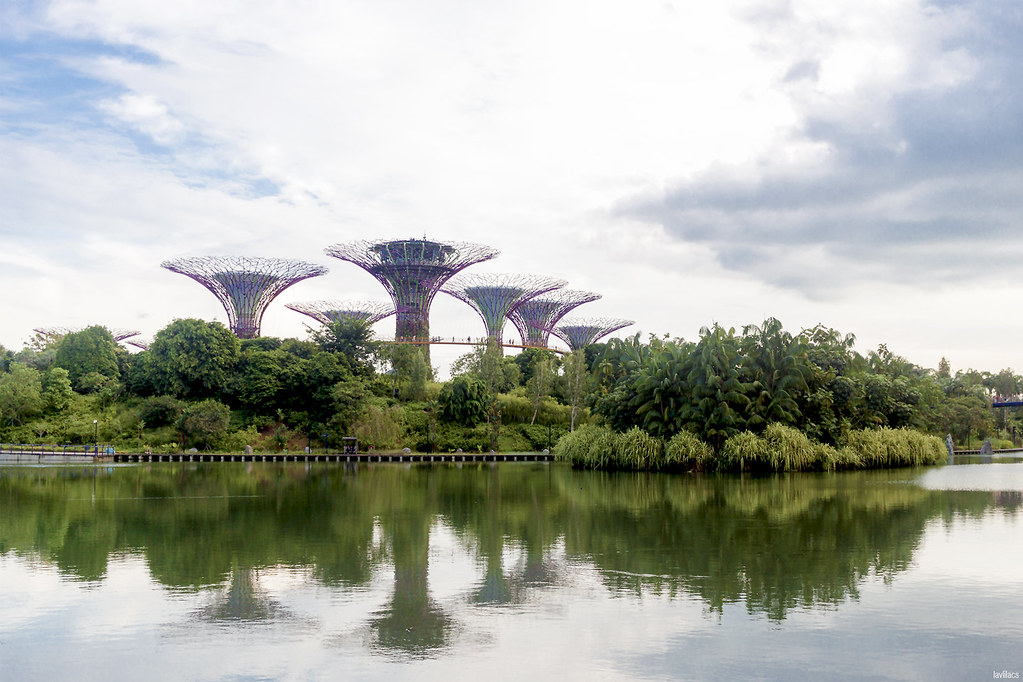
Gardens by the Bay looks like something out of a science fiction movie from afar. The tall metal structure that flares and branches at the top, reaching towards the sky, while nestled amongst a dense cluster of trees. Maybe something that could be used as an observation/command tower or a glorified luxurious home of some tech mogul?
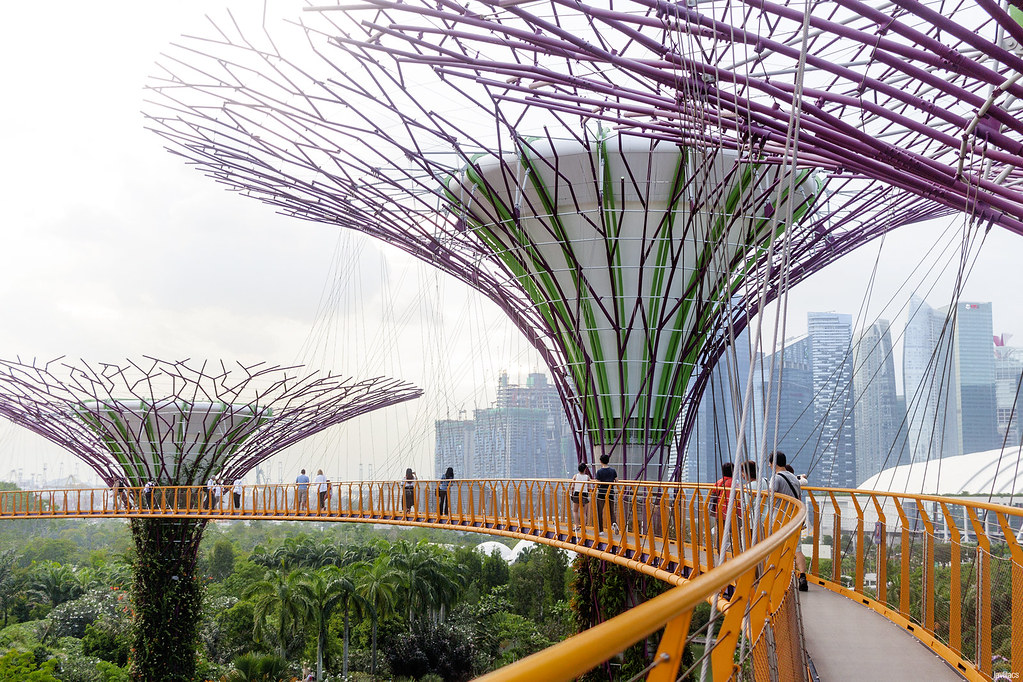
In reality, the Supertrees are actually quite scientific and environmental. They aren't nearly big enough to be people's homes. But it is a residence of sorts for a lot of flora that grows up and around its metal trunks. It even has solar power and rainwater collection abilities working behind the scenes. The view from afar, up close, or up above are all equally as breathtaking.
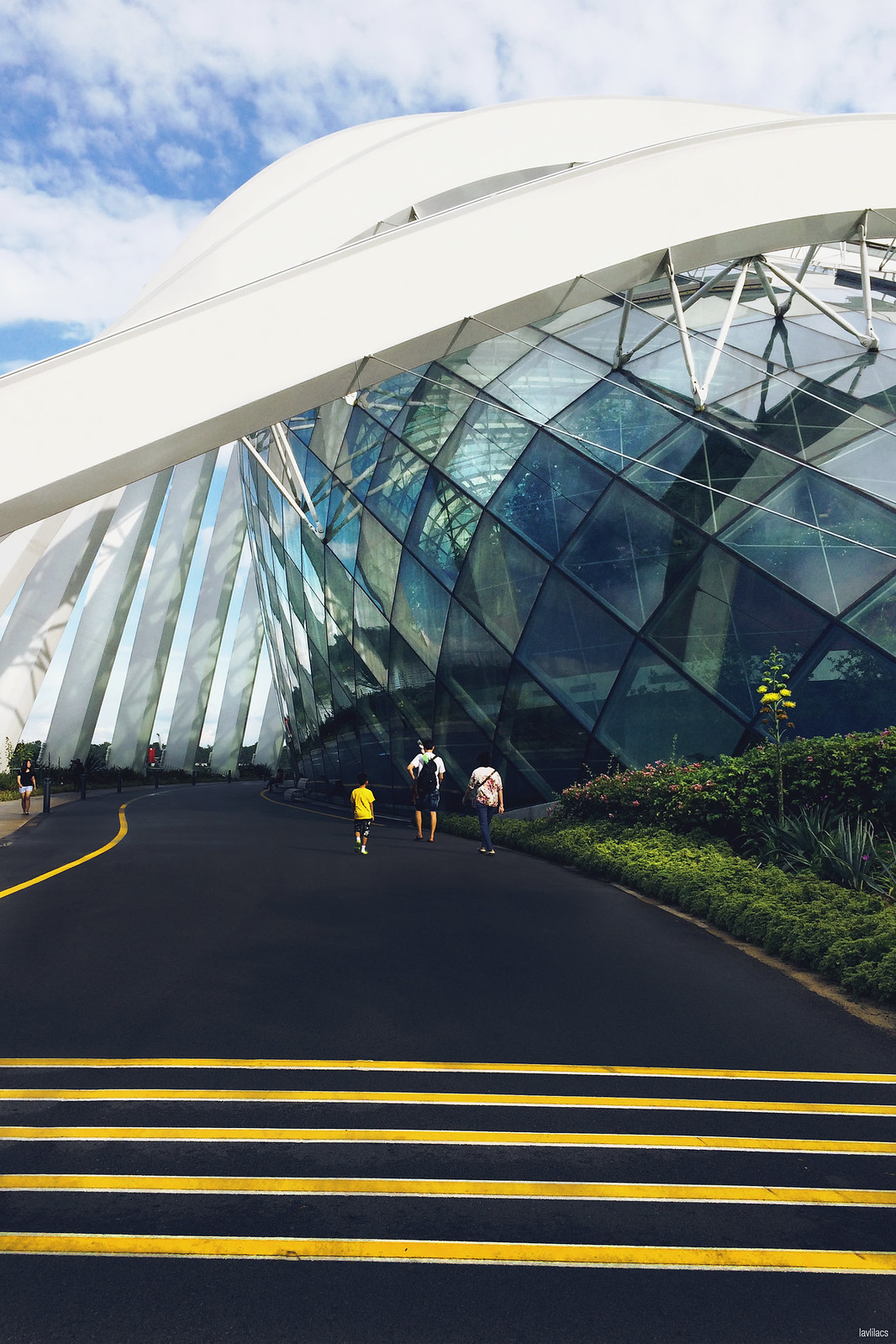
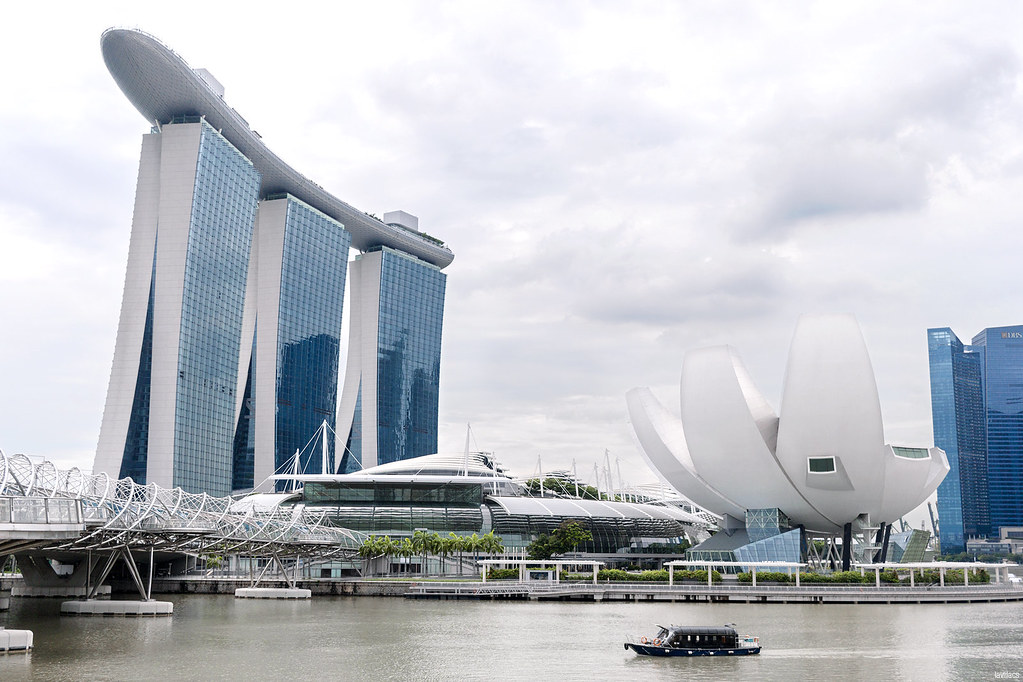

I loved visiting Marina Bay. The main reason is being able to see the different sides of metropolis Singapore in a relatively small area. The second reason is how walkable and connected all corners of Marina Bay is despite being separated by the bay. Gardens and greenery in one direction. Unique architectural feats in another; Marina Bay Sands looking ship like and the ArtScience Museum reminiscent of a lotus flower. Then little ways away are a cluster of tall branded skyscrapers indicating a financial hub. Theaters, arts, and entertainment venues are seemingly footsteps away in another direction.

Even after the sun sets and the sky becomes pitch black, Marina Bay still is surprisingly lively.
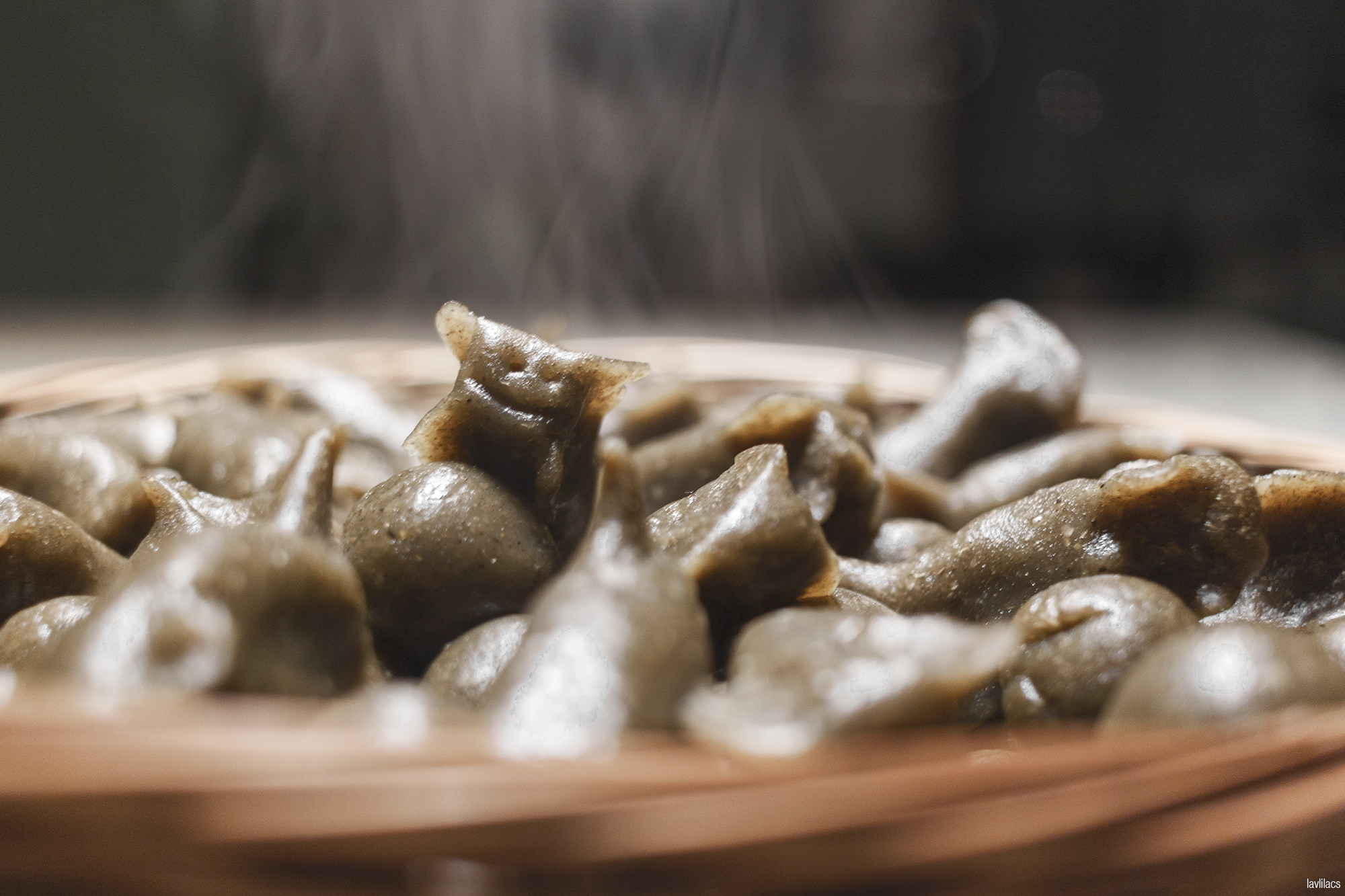
Skunk vine. Stink vine. Chinese fever vine. Paederia foetida. All those names refer to one type of plant. Yet not one sound remotely appetizing. Before I decided to make a record of this recipe, I hadn't a clue what the name of this ingredients was in English or Chinese. It was just something that was a part of a food Grandma used to make occasionally and something that I liked.
Good thing for the internet! It seems like this plant originated from eastern and southern Asia and grows mainly in tropical, hot and humid, climates. Some sources classify the skunk vine as a type of weed due to its fast growing and invasive tendencies. In Taishan, it is sun-dried and ground into a powder to be used in various foods.
Foo keen haang yuan 烏芹藤圓 is what Grandma calls the dark green, almost black, chewy spheres in Taishanese. I took it upon myself to, quite literally, translate it into skunk vine rice cake balls. There are also a couple of other Chinese names for this as well, cow poop ball 牛屎圓 and chicken poop vine ball 雞屎藤圓. Again, neither are redeeming in any way, shape, or form. But they really don't taste as bad as the name would suggest. Honestly!
I am a huge sucker for nostalgia. Despite my curiosity to try new things, I can't help but also yearn to revisit old favorites I have fond memories of. Recounting all those memories I made in Asia the last few months got me thinking about these unfortunately named treats that I remember Grandma made. But let's face it, my popo isn't getting any younger and the amount of traditional homestyle foods she's made in the recent years have greatly diminished. If I were to crave these in the future and knock on wood Grandma cannot make these unique foods anymore, it would become a lost art of sorts. I thought it would be an interesting way to not only keep a record of Grandma's recipes and learn about some Chinese traditions but also to spend more time with my popo.
Even if no one else finds this interesting, this will be my digital library of personal recipes.
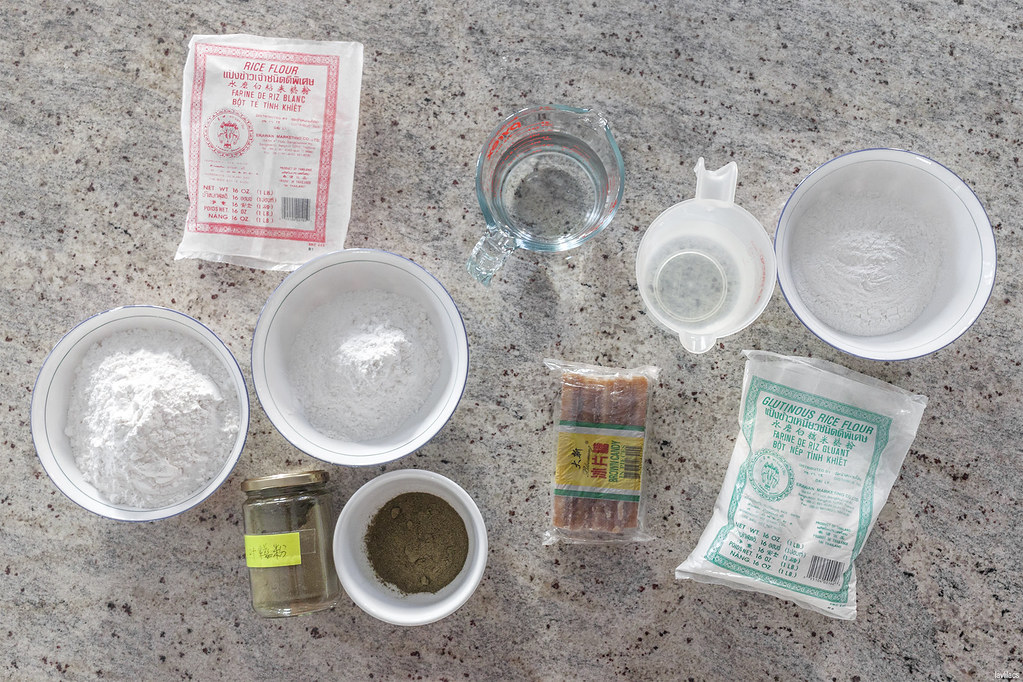
Skunk Vine Rice Cake Balls - Foo Keen Haang Yuan - 烏芹藤圓
Dry ingredients mixture
3 cups rice flour 米粉
1 cup glutinous rice flour 糯米粉
1-3 tbsp of skunk vine powder 烏芹藤粉*
Sugar paste
1 package of Chinese brown sugar 冰片糖 (or 1.5 cups cane sugar)
1 cup rice flour 米粉
3 cups water 水
* The amount of skunk vine powder is totally up to personal taste. Skunk vine is supposed to have a very strong sulphuric taste. The very traditional foods made with it, I think, uses a lot of powder to achieve a really pitch black final product. But I find the taste is too strong for my liking if I put too much (the most I've tried is 4 tbsp). Sourcing skunk vine powder outside of China might be a little difficult even in densely Chinese populated areas.
Directions
1. Mix the dry ingredients together. (I prefer sheet pan or anything wide and shallow. But a big bowl works too.)
2. Place the sugar and half of the water into a pot and bring it to a boil.
3. Reduce flame to a low-medium heat after all the sugar has melted.
4. Mix 1 cup of rice flour and the remaining half of the water together. Mix well!
5. Pour the rice flour + water into the sugar syrup when after all the sugar is melted.
6. Keep stirring the simple syrup and rice flour mixture until it starts to bubble and thicken. Before careful to not to burn the bottom.
7. Add the piping hot sugar paste to the dry ingredients mixture a little at a time to form a dough. Not all of the sugar paste will be used! Add just enough for everything to come together and not be sticky. A little paste goes a long way.
I recommend using chopsticks at first to stir the paste and the flours quickly. As the flour starts to make little clumps of dough, put on powder-free plastic gloves and start kneading by hand. If you can tolerate insane heat, then feel free to go barehanded.
8. Knead for about 10-15 minutes or until whenever all the flour and paste fully incorporates to form a dough ball. The dough should be soft, pliable, not sticky, and won't crumble when squished. A texture similar to fresh Play-doh. Even having a drier dough is okay. As long as it can be rolled into balls and still holds its shape relatively well.
9. Wet a bamboo steamer or place a steamer cloth on a pan.
10. Shape the dough into small grape-sized balls. Dog shapes are optional.
11. Boil water in a wok or pot.
12. Reduce flame to a medium and place the steamer full of rice cakes inside.
13. Before covering it with the lid, generously sprinkle water all over the rice cakes to prevent too much sticking and give it a nice sheen.
14. Steam on a medium flame for 30 minutes or until the rice cakes are cooked through.
15. Eat and enjoy!
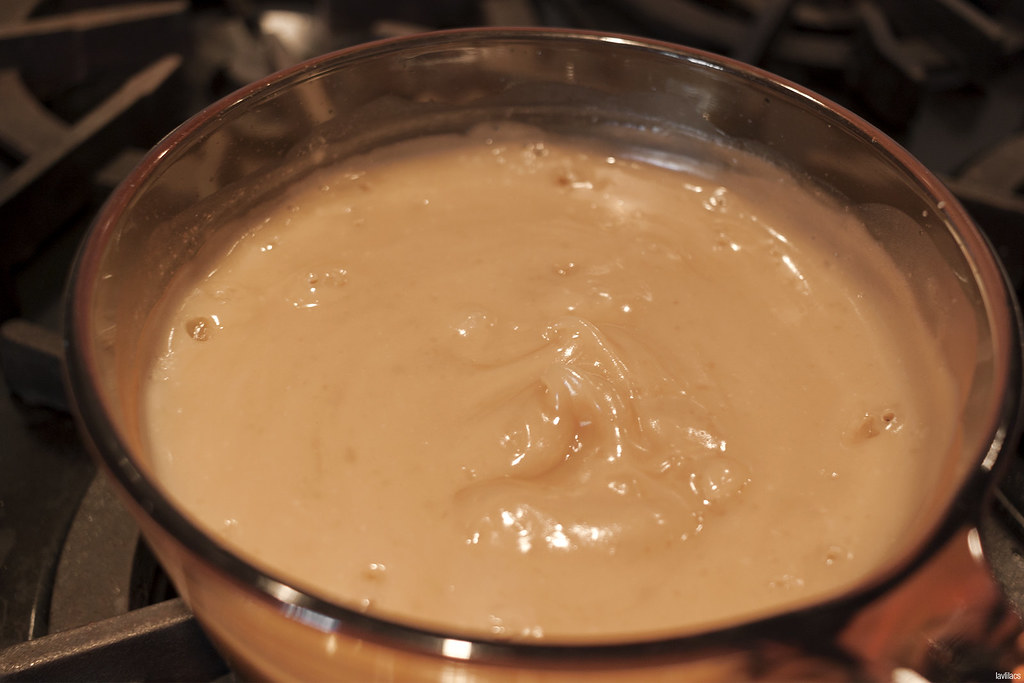
The sugar paste should ultimately look similar to the above photo. It won't bubble a ton but it will make small spurts and be a little bubbly. This is also completely edible as is.
The key to forming the dough is to work fast while the sugar paste is hot. Grandma says that the sugar paste is what helps to make the final product a bit soft. The glutinous rice flour also gives a slight chewiness. But overall, it should be quite firm with some chew.
If too much sugar paste is added and the dough is too sticky, add a little more rice flour or glutinous rice flour to the dough. If the dough is too dry, add a little more paste. If there is no more paste, add a bit of water. There isn't an exact science to this. Grandma just did everything by feel and approximation. She called me foolish for wanting to know exact measurements.

One of my fondest memories with these rice cake balls are the dog-shaped treats. I remember loving to pick those out whenever Grandma made them when I was a kid. The reasons for making them were never clear to me. They were just cute and unique amongst a basket full of boring spheres.
I only just learned from Grandma that these skunk vine rice cake balls are actually made for a specific Lunar calendar holiday, March 3rd 三月三節. When questioned, popo said she didn't know the specific reason for making such a food and it was just a tradition she kept by. Foo keen haang yuan were made to be eaten. The dogs were made to be hung by the outermost door as a home protector from bad luck and evil spirits.
Besides the skunk vine balls, she said bao kok (or ham sui kok) and something called wah hoi are also made in celebration of the March 3rd holiday.
Grandma's dog making method:
Pinch out a tail. Followed by ears. Then four legs. Get a toothpick and poke up the eyes, nose, and mouth. Her highlight was, of course, including a butthole for accuracy.
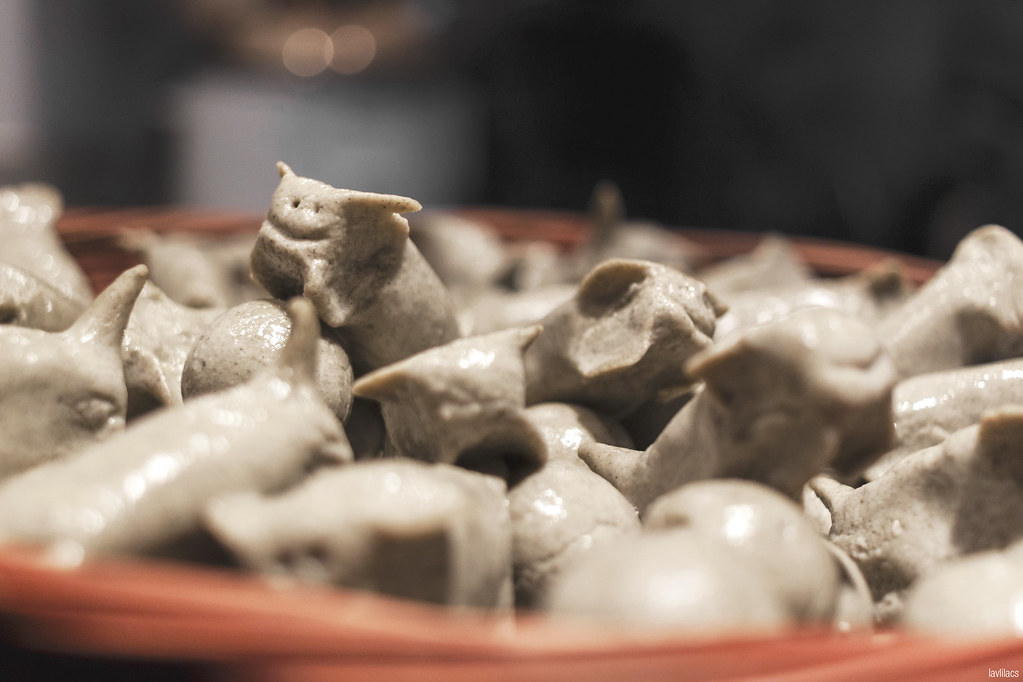
Grandma uses bamboo baskets to hold the rice cakes. The hole-y nature of it helped to let any of the extra water through. If not the rice cakes at the very bottom of a pan would be too soggy. She also suggested to only have 2-3 layers of rice cakes in order to avoid having any uncooked ones at the center of the pile. Keeping the dog-shaped ones on top will help to dodge any accidental severings of its delicate body parts.

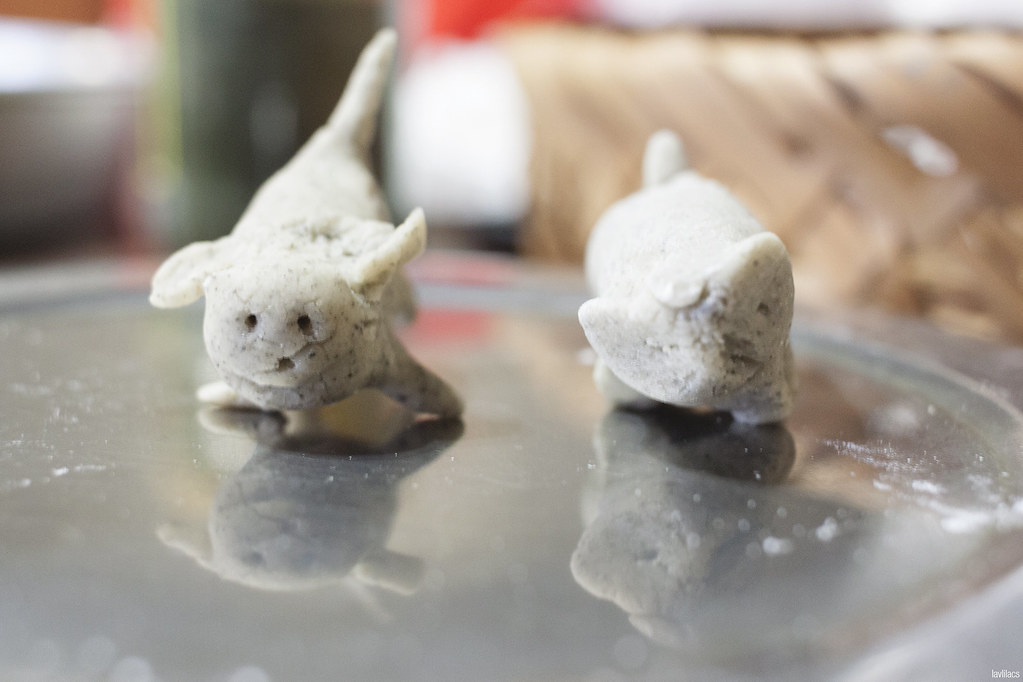
Like I mentioned earlier, Grandma hasn't made these in a while. I had forgotten how her "dogs" looked. Would you agree and think her version (on the right) looks owl-esque?






















